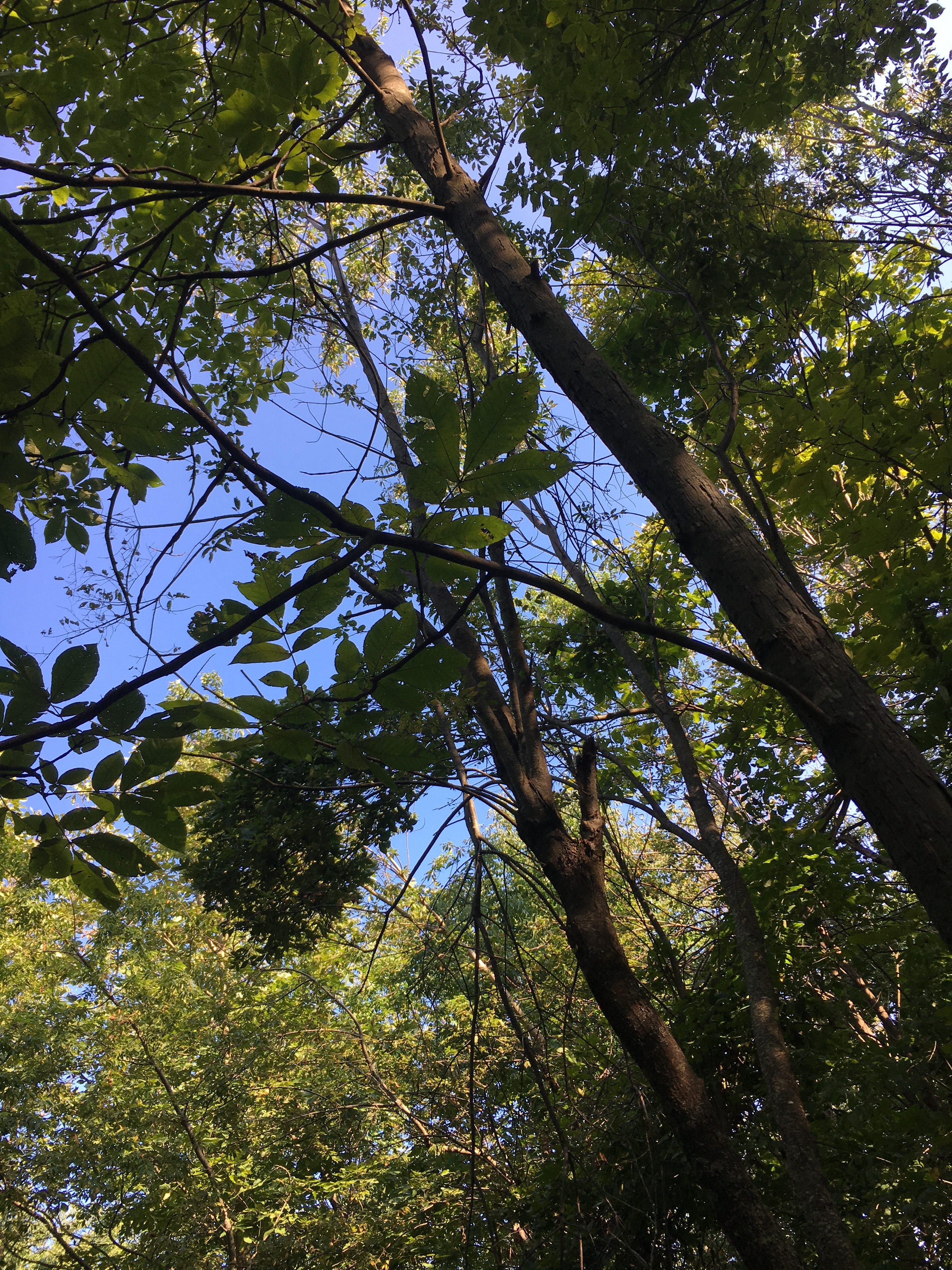Consider the Timber
Shenandoah National Park, September 8–16, 2019
Dispatch 2: Megaflora
It can be hard for anyone to see the forest for the trees, but in the backcountry, it can be hard to see the trees themselves. They’re such an integral part of the fabric of the setting that, like air for humans or water for fish, they can disappear if we aren’t consciously attending to them.
At least that’s what’s always happened for me and trees. As much as I love their canopy, the peace instilled by the sight of a branch lifting on a breeze and settling with a flutter, the woodland air quality, and the way trees dapple sunlight onto a fern-covered forest floor, I have too often failed to truly see trees.
Trees Speak (Really, They Do!)
Then I read Richard Powers’s novel The Overstory and all that changed. His book traces the lives of trees and people from around 1900 to the present day, weaving together the stories of tree-huggers, scientists, journalists, hippies, and of course trees themselves. I vaguely knew before reading the book that trees had a kind of intelligence, but I didn’t realize how complex their communication was. The book helped me start to understand this—along with how vital old-growth forests are to our (and many others’) species’ survival—and triggered a fervent interest in learning at least the basics about trees: their names.
Sprouts
Shenandoah National Park contains almost all second-growth forest, meaning most of the land was cleared and what trees exist are no more than 100 years old. In 1935, when the park was established, a third of it was totally deforested, having been logged, farmed, grazed, and subjected to a chestnut blight. The rest of it was young, regenerating forest. (White Oak Canyon is a notable exception: it has been designated as old-growth forest.)
Before I headed out for a section hike on the Appalachian Trail through the park last month, I downloaded the Virginia forestry department’s Common Native Trees of Virginia, an identification guide. Plentiful trees in the park include ash, basswood, birch, oak, and maple. I emailed myself the guide so I would have it on my phone to try to match names to trees as I walked along.
Once I got out there, though, the park’s overall beauty overwhelmed me so much that the most I could do was snap photos of trees. I could always ID them later, I figured. This turned out to be tough, though, because inevitably I didn’t photograph enough parts of the tree to go through the flow-chart guide with confidence. I take comfort, however, from the fact I spent more time and intention on simply noticing them: Were the leaves opposite or alternate? Were they a palmate or pinnate shape? Did their edges look wavy, toothed, or lobed?
So much of the joy of hiking comes from the mindfulness it encourages. With no agenda aside from putting one foot in front of the other, it’s easy to attend to the present. Sure it gets boring watching your feet so as not to fall, seeing mostly rocks, dirt, and roots beneath you. All the more reason to pause, look up, and behold the backdrop.
This website contains affiliate links, which means The Trek may receive a percentage of any product or service you purchase using the links in the articles or advertisements. The buyer pays the same price as they would otherwise, and your purchase helps to support The Trek's ongoing goal to serve you quality backpacking advice and information. Thanks for your support!
To learn more, please visit the About This Site page.







Comments 2
One of my favorite hikes is in the Joyce Kilmer Forest. It is not far from the Fontana Dam area of the AT. It is an old growth forest that was saved from the logging that was so prevalent in the area a hundred years ago.
Oooh, I did not know about that one. Thank you!